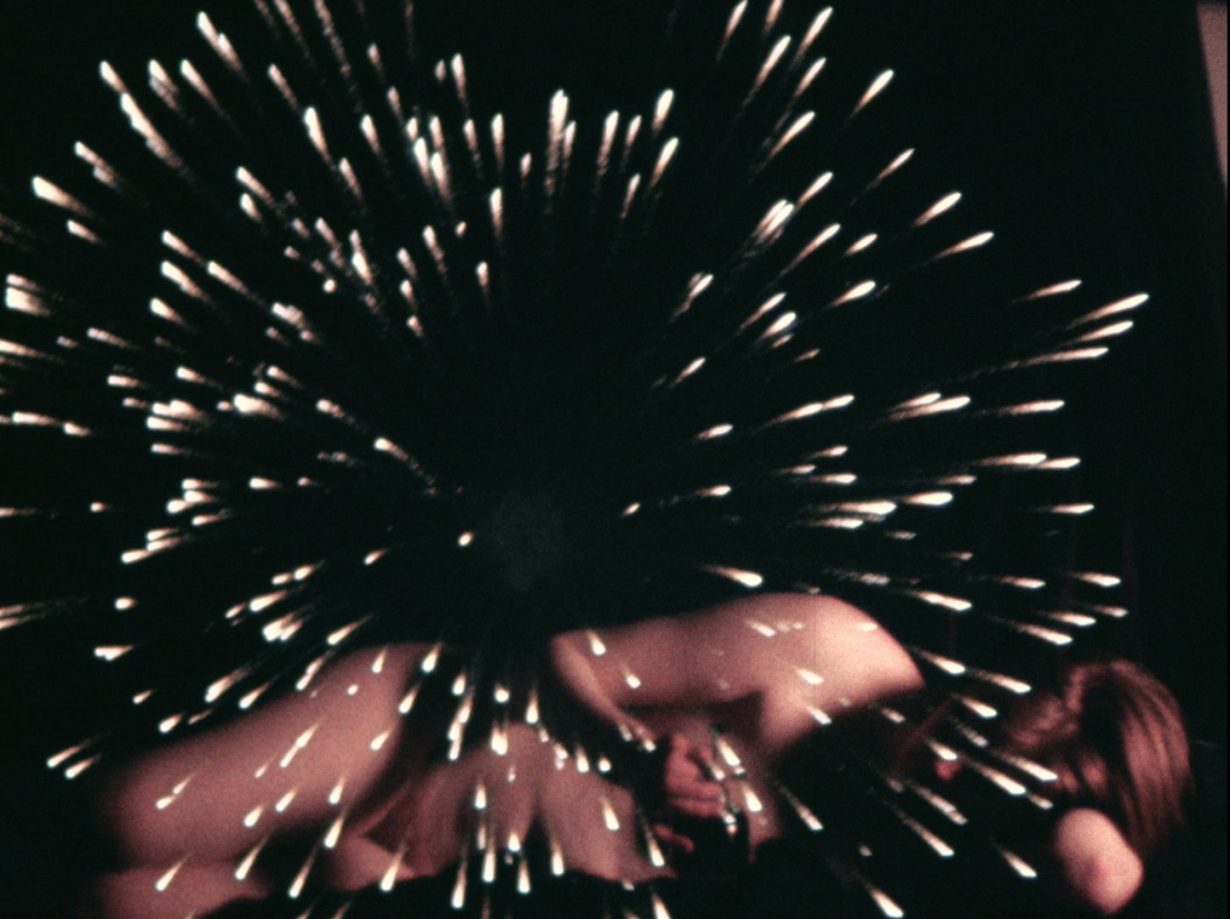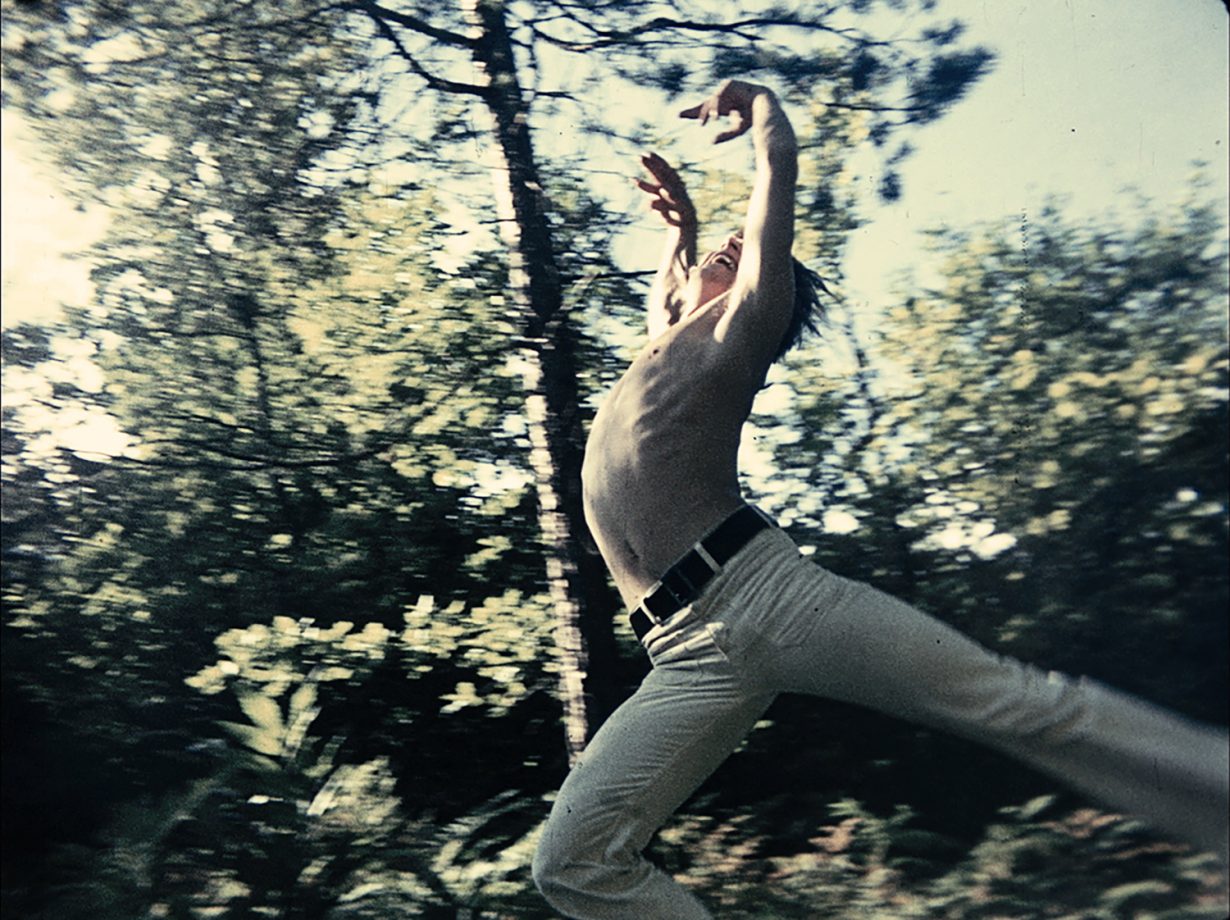The release of these works reveals a whole other side to the introspective painter, who filmed extensively in 1970s New York
Best known as a painter, and especially for her innovative self-portraits, Austrian artist Maria Lassnig spent the 1970s in New York. During that time, she worked extensively in moving image, completing several works, including the animated Selfportrait (1971) and Couples (1972), and joining the Women/Artist/Filmmakers, Inc collective with Carolee Schneemann and others. She left New York in 1980, when she received an invitation to teach at the University of Applied Arts, Vienna – which, to her astonishment, met her demand that she be paid the same as her new colleague, Joseph Beuys; she was a chair at the school until 1997, and kept painting for the rest of her life.
After Lassnig died, in 2014, aged ninety-four, two former students, filmmakers Mara Mattuschka and Hans Werner Poschauko, revisited some of the unfinished 8mm and 16mm short films that had sat in a trunk since her return from New York, and that she had not wanted screened again during her lifetime but was willing to let others complete after her death. Finished using Lassnig’s notes and Mattuschka and Poschauko’s intuitions, final cuts and colour corrections, 19 of these works have been released on DVD as Film Works by the Austrian Film Museum. They come with a book that includes reminiscences from Schneemann, Paul McCarthy, Ulrike Ottinger and others, an interview with Mattuschka and Poschauko about the restorations, an article on Lassnig’s sadly unrealised Anti-War Film, in which she planned to address violence and conflict from the ancient era to the present, Lassnig’s essay ‘Animation as a Form of Art’ (1973), scans and transcriptions of her notes and drawings, and an extensive filmography that includes these newly available works.

Poschauko tells us that once Lassnig returned to Vienna, she broke off all contacts in New York. She also distanced herself from the feminist movement that had so interested her there, not wanting to be ‘pigeonholed’ as a woman and using the male form of artist (Künstler, rather than Künstlerin) to describe herself in German. The members of Women/Artist/Filmmakers, Inc shared few stylistic or political principles, making these works hard to place within that context, but Schneemann remembered them fondly, calling them ‘charming, ironic, shifting between static images and density in motion… always colourful with a subtle, brutal gender appetite towards erotic happiness’. Indeed, the Film Works are more outward-looking than her intimate, introspective self-portraits and animations – perhaps because, as Lassnig is quoted here as saying, in film, the ‘eyes of the painter are half-replaced by a machine that makes its own demands’.

Several of them are from Lassnig’s Soul Sisters series, made between 1972 and 1979, where she created portraits of her friends Alice, Bärbl and Hilde. As with the rest of the collection, they are prefaced with an explanation of their format, length, whether they were a rough or final cut, and what is used to soundtrack them – in these instances, works by Anton Webern and George Frideric Handel. Lassnig uses English-language voiceovers for Alice and Bärbl, speaking in sympathy with two women struggling in their relationships: Alice, an Icelandic artist who moved to New York, couldn’t keep up with her many boyfriends and disappeared “like a comet”; “typical Austrian woman” Bärbl was frustrated with a partner she rarely saw, and felt she might rather be alone. In their detached view of sexuality and creative use of the naked body – Alice, blindfolded, pins the names of her lovers and their defining qualities to the wall, and then to herself – these films recall Lassnig’s younger compatriot VALIE EXPORT. But there is no distancing of the viewer from the subject through experimentation with 16mm form, as with many works by the London Film-Makers’ Co-operative, or structural filmmakers such as Kurt Kren. Besides EXPORT, whose films are generally far more confrontational, it’s hard to discern many influences on Lassnig, but easier to see how her approach inspired Austrian artists such as Mattuschka, Ursula Pürrer and Ashley Hans Scheirl, whose portraits of themselves and their friends during the 1980s share a similar playfulness.
Autumn Thoughts (c. 1975) is, like Black Dancer (1974), concerned with movement as a way of conveying personality, displaying the influence of Maya Deren – often cited as the founder of US avant-garde film, and one of the only women included in histories of its development before the 1970s. In just two minutes, Autumn Thoughts efficiently contrasts a melancholic, middle-aged woman (Lassnig) gazing into water with a youthful male dancer, quickening the film’s tempo and blurring its frames to emphasise the divides between young and old, suggesting in the cutting between the two figures that while men see (heterosexual) relationships as a source of energy, for women they can be exhausting.

Other films engage with the media in wryly amusing ways. Francis Ford Coppola shot parts of The Godfather: Part II (1974) near Lassnig’s studio, so she joined them on set, capturing the 1920s ‘Little Italy’ that Coppola had recreated in the East Village, calling her piece Godfather I, II and III. Her use of double exposure gives the sense of two time periods happening simultaneously, while a lens that shifts in and out of focus reminds viewers that they’re watching a film – but it’s only when Lassnig catches an important moment in Coppola’s narrative that we realise we’re watching a ‘drama’.
Moonlanding/Janus Head (1971–72) combines found footage of a NASA mission (it’s not clear which), figure skating and American football with Lassnig’s own material. Again, she uses multiple exposures for dramatic effect, suggesting this bombardment of images and stimuli can be invigorating rather than overwhelming, and capitalising on the shared sense of wonder at the televised broadcasts from the Moon.

© Maria Lassnig Foundation
The centrepiece, and longest film of the collection, also shown as a work in progress during Lassnig’s lifetime and then left unfinished, is The Princess and the Shepherd. A Fairytale (1976–78). Lassnig examines the gendered tropes and clichés of the genre without overbearing cynicism, mocking its male archetypes with the subtle brutality that Schneemann highlighted in her recollections. Its conclusion, with the princess opting for a simple life over social expectations, is perhaps unsurprising from an artist who always valued honest self-expression and personal independence above all else.
Maria Lassnig. Film Works, produced by the Austrian Film Museum
